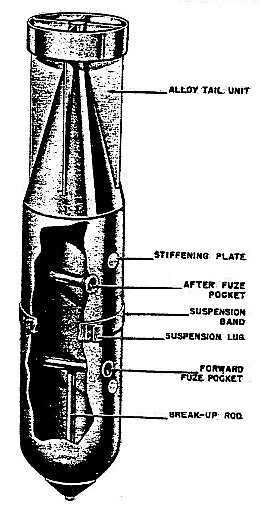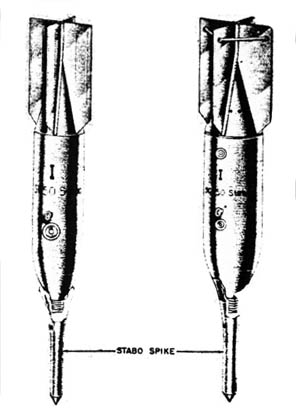|
Sprengbombe-Cylindrisch Bomb (other)
Sprengbombe-Cylindrisch bomb may refer to: * SC2500 bomb, (Sprengbombe Cylindrisch 2500) explosive device built by Germany during World War II. * SC2000 bomb, (Sprengbombe Cylindrisch 2000) explosive device built by Germany during World War II. * SC1800 bomb, (Sprengbombe Cylindrisch 1800) explosive device built by Germany during World War II. * SC1200 bomb, (Sprengbombe Cylindrisch 1200) explosive device built by Germany during World War II. * SC1000 bomb, (Sprengbombe Cylindrisch 1000) explosive device built by Germany during World War II. * SC500 bomb, (Sprengbombe Cylindrisch 500) explosive device built by Germany during World War II. * SC250 bomb, (Sprengbombe Cylindrisch 250) explosive device built by Germany during World War II. * SC50 bomb, (Sprengbombe Cylindrisch 50) explosive device built by Germany during World War II. {{Disambiguation ... [...More Info...] [...Related Items...] OR: [Wikipedia] [Google] [Baidu] |
SC2500 Bomb
The SC 2500 ( Sprengbombe Cylindrisch) or ''cylindrical explosive bomb'' in English was a general-purpose bomb used by the Luftwaffe during World War II. Design The SC 2500 had a single piece machined aluminum body with a welded nose piece. Around the nose of the bomb was a ''kopfring'' - a metal ring, triangular in cross-section, designed to prevent ground penetration or to stop forward momentum when hitting the water. The SC 2500 also had a circular braced tail ring with four fins. The SC 2500 was similar in construction to the SB 2500 and the main difference between the two was the SB 2500's case was made of steel. There were two transverse fuzes one in the nose and one near the tail. The nose fuse had a centrally located break-up rod that crushed the nose fuze on impact triggering the explosives. The SC 2500 was filled with ''Trialen 105'', a mixture of 15% RDX, 70% TNT and 15% aluminum powder. Externally there was a reinforced H-type suspension band and the bomb cou ... [...More Info...] [...Related Items...] OR: [Wikipedia] [Google] [Baidu] |
SC2000 Bomb
The SC 2000 ( Sprengbombe Cylindrisch) or ''cylindrical explosive bomb'' in English was a general-purpose bomb used by the Luftwaffe during World War II. Design The SC 2000 had a single piece forged and machined steel body and was similar to the preceding SC 1800 in construction. Around the nose of the bomb was a ''kopfring'' - a metal ring, triangular in cross section, designed to prevent ground penetration or to stop forward momentum when hitting water. The SC 2000 was filled with Amatol, had a single transverse fuze like the SC 1800 and a central exploder tube which ran through the explosives. The SC 2000 had a circular braced tail ring with four fins. Inside the bomb casing there was a reinforced H-type suspension lug and it could be horizontally suspended in a bomb bay or horizontally mounted on a fuselage hardpoint. There were also lugs that could be fitted for dive bombing A dive bomber is a bomber aircraft that dives directly at its targets in order to provi ... [...More Info...] [...Related Items...] OR: [Wikipedia] [Google] [Baidu] |
SC1800 Bomb
The SC 1800 ('' Sprengbombe Cylindrisch 1800'') or ''cylindrical explosive bomb'' was a general-purpose bomb used by the Luftwaffe during World War II. Design The SC 1800 had a single piece forged and machined steel body and was similar to the preceding SC 1200 in construction. The bomb was usually filled with a mixture of 40% amatol and 60% Trotyl, but when used as an anti-shipping bomb it was filled with ''Trialen 105'', a mixture of 15% hexogen, 70% Trotyl and 15% aluminium powder. The SC 1800 had a single transverse fuze unlike the central fuze of the SC 1200. The SC 1800 tail assembly had four diagonally braced tail fins while the SC 1800B had a circular braced tail ring. Inside the bomb casing there was a reinforced H-type suspension lug and it could be horizontally suspended in a bomb bay or horizontally mounted on a fuselage hardpoint A hardpoint is an attachment location on a structural frame designed to transfer force and carry an external or internal load. Th ... [...More Info...] [...Related Items...] OR: [Wikipedia] [Google] [Baidu] |
SC1200 Bomb
The SC 1200 ( Sprengbombe Cylindrisch) or ''cylindrical explosive bomb'' in English was a general-purpose bomb used by the Luftwaffe during World War II. Design It had a drawn steel body with a heavy cast steel nose cap for armor penetration and was similar to the preceding SC 1000 in construction. It was filled with ''Trialen 105'', a mixture of 15% RDX, 70% TNT and 15% aluminium powder. A central exploder tube of high grade TNT ran down the center of the explosives to ensure detonation. At the other end was a base plate, just forward of which the magnesium alloy tail was tack welded onto the body, and also bolted to the tail attachment brace. Around the nose of the bomb was a ''kopfring'' - a metal ring, triangular in cross section, designed to prevent ground penetration or to stop forward momentum when hitting water. The bomb was attached to the aircraft horizontally by an attachment band and hung from a H-type suspension lug. It could be horizontally suspended in a bomb ... [...More Info...] [...Related Items...] OR: [Wikipedia] [Google] [Baidu] |
SC1000 Bomb
The SC 1000 ('' Sprengbombe Cylindrisch 1000'') or ''cylindrical explosive bomb'' was a large air-dropped general-purpose thin-cased high explosive demolition bomb used by Germany during World War II. Weighing more than , it was nicknamed the ''Hermann'' by the Germans in reference to the fat ''Luftwaffe'' commander, Hermann Göring. Design In December 1941, the bomb had a body of drawn steel to which a heavy pointed nose cone was welded. At the other end was a base plate, just forward of which the magnesium alloy tail was tack welded onto the body, and also bolted to the tail attachment brace. Around the nose of the bomb was a ''kopfring'' - a metal ring, triangular in cross section, designed to prevent ground penetration or to stop forward momentum when hitting water. The bomb was attached to the aircraft horizontally by a H-type suspension lug.TM 9-1985-2 (1953), pp. 9–10 The bomb was fitted with a single transverse fuse pocket. The bomb was usually filled with a mixtur ... [...More Info...] [...Related Items...] OR: [Wikipedia] [Google] [Baidu] |
SC500 Bomb
The SC 500 (Sprengbombe-Cylindrisch bomb (other), Sprengbombe Cylindrisch) or ''cylindrical explosive bomb'' in English was a family of general-purpose bombs used by the Luftwaffe during World War II. Design They had three-piece drawn steel bodies with a heavy machined nose cap for armor penetration. At the other end was a base plate, just forward of which the magnesium alloy tail was tack welded onto the body, and also bolted to the tail attachment brace. The bomb was usually filled with a mixture of 40% amatol and 60% TNT, Trotyl, but when used as an anti-shipping bomb it was filled with ''Trialen 105'', a mixture of 15% RDX, hexogen, 70% TNT, Trotyl and 15% aluminium powder. Around the nose of the bomb was a ''kopfring'' - a metal ring, triangular in cross section, designed to prevent ground penetration or to stop forward momentum when hitting water. The bomb could also be fitted with a ''Stabo Spike'' which was an anti-ricochet device that prevented the bomb fr ... [...More Info...] [...Related Items...] OR: [Wikipedia] [Google] [Baidu] |
SC250 Bomb
The SC 250 (''Sprengbombe Cylindrisch 250'') was an air-dropped general purpose high-explosive bomb built by Germany during World War II and used extensively during that period. It could be carried by almost all German bomber aircraft, and was used to notable effect by the Junkers Ju 87 ''Stuka'' (''Sturzkampfflugzeug'' or dive-bomber). The bomb's weight was about 250 kg, from which its designation was derived. It was used in the Eastern Front and many other theatres, and was feared for its destructive power. The SC 250 was one of the most commonly used bombs in World War II and was deployed extensively during the Blitz on London. Design The bomb consisted of two or three sections, depending on the grade of the bomb; in the grade (''Güteklasse'') I bombs, the nose cone and the bomb body were forged out of a single piece of high quality alloyed steel or the nose was welded to the body; these bombs were of the highest mechanical strength and they were meant to be used again ... [...More Info...] [...Related Items...] OR: [Wikipedia] [Google] [Baidu] |


